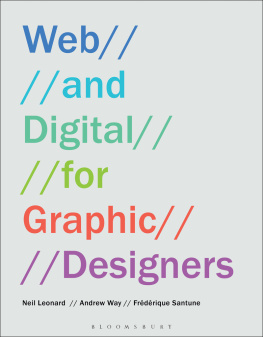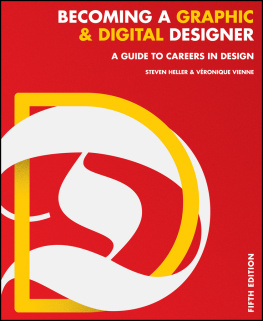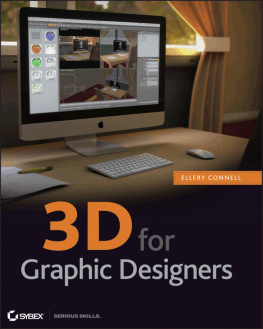
BLOOMSBURY VISUAL ARTS
Bloomsbury Publishing Plc
50 Bedford Square, London, WC1B 3DP, UK
1385 Broadway, New York, NY 10018, USA
This electronic edition published in 2020 by Bloomsbury Publishing Plc
BLOOMSBURY, BLOOMSBURY VISUAL ARTS and the Diana logo are trademarks of Bloomsbury Publishing Plc
First published in Great Britain 2020
Copyright Bloomsbury, 2020
Neil Leonard, Frdrique Santune, and Andrew Way have asserted their rights under the Copyright, Designs and Patents Act, 1988, to be identified as Authors of this work.
For legal purposes the constitute an extension of this copyright page.
Cover design: Steve Stacey
All rights reserved
You may not copy, distribute, transmit, reproduce or otherwise make available this publication (or any part of it) in any form, or by any means (including without limitation electronic, digital, optical, mechanical, photocopying, printing, recording or otherwise), without the prior written permission of the publisher. Any person who does any unauthorised act in relation to this publication may be liable to criminal prosecution and civil claims for damages.
Bloomsbury Publishing Plc does not have any control over, or responsibility for, any third-party websites referred to or in this book. All internet addresses given in this book were correct at the time of going to press. The author and publisher regret any inconvenience caused if addresses have changed or sites have ceased to exist, but can accept no responsibility for any such changes.
A catalogue record for this book is available from the British Library.
A catalogue record of this book is available from the Library of Congress.
ISBN: 978-1-3500-2755-8 (PB)
ISBN: 978-1-3500-2756-5 (eBook)
ISBN: 978-1-3500-2766-4 (ePDF)
To find out more about our authors and their books please visit www.bloomsbury.com where you will find extracts, author interviews and details of forthcoming events, and to be the first to hear about latest releases and special offers, sign up for our newsletters .

BANK Associates
Image over: The Berlin Studio of design agency, BANK Associates.
www.bankassociates.de/
Contents
Introduction
The term graphic design was coined in the 1920s. Since then, the profession has developed constantly, and nothing has encouraged and expedited this change more than the digital revolution.
Computers have existed for many years in various shapes and forms, but until the late 1970s and early 1980s, there was little need for graphic designers to pay any attention to them. Then, the graphic interface was born, and everything changed.
Many of the people that birthed the first graphic interfaces had knowledge, or experience of graphic design, and an interest in typography and image generation (Steve Jobs of Apple was perhaps the person who brought this consideration most prominently to computing and personal computers). These visionaries saw the need for crisp graphics, icon systems to guide users, typographic choices that communicated well and legibly on the screen, and the absolute need to make these important grey boxes desirable, well-designed objects.
Through, the 1980s, the Apple Mac brought new possibilities to the graphic design profession and made many time-consuming tasks, such as paste-up and typesetting, redundant overnight. While there has been some resurgence in these traditional ways of working, it is hard to imagine setting entire publications using letterpress now.
Around the same time as the rise of the Apple Mac, another development surfaced, and initially, many did not predict the way it would change graphic design forever.
The Internet has existed in some form since the Second World War, when it was used as a communication tool, but it wasnt until Sir Tim Berners Lee developed HTML (HyperText Markup Language) that the application and need for graphic designers to involve themselves in the Internet became clear.
HTML works in the same way as a traditional typesetter: a designer develops a set of rules and indicates which text or content should adhere to which rule; then, the typesetter styles the copy in the correct manner using the assigned style and typeface.
Similarly, HTML wraps areas of content in a way that allows graphic designers (or front-end developers, but well get on to that shortly) to write particular rules that govern its presentation.
The development of CSS (Cascading Style Sheets) meant that there were more possibilities open to designers, and it also meant that multiple pages could be managed from a central set of rules (a style sheet).
As connection speeds improved, the Internet began to host a greater range of content, from motion-based websites to applications and games.















